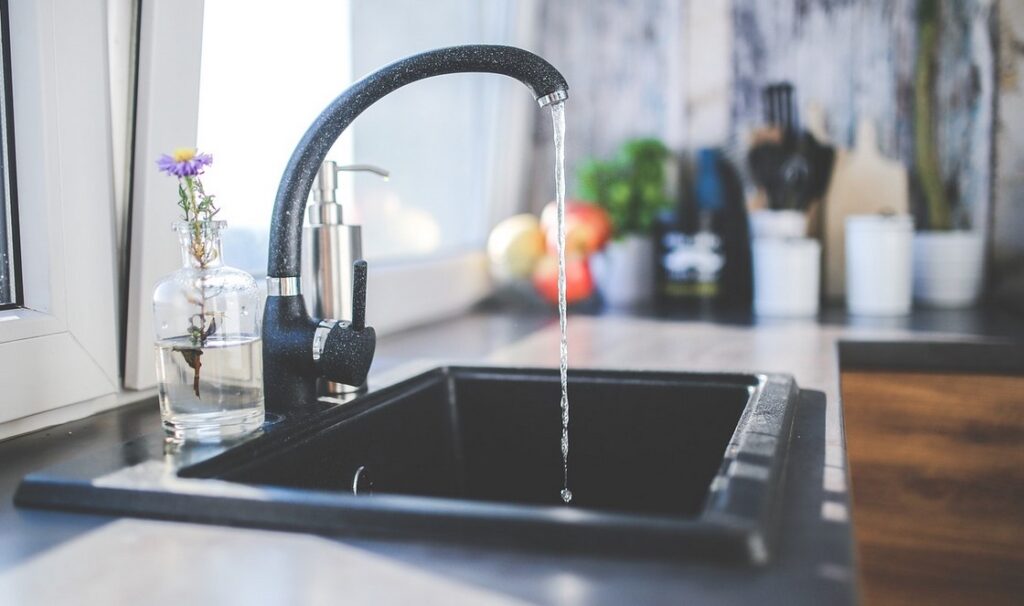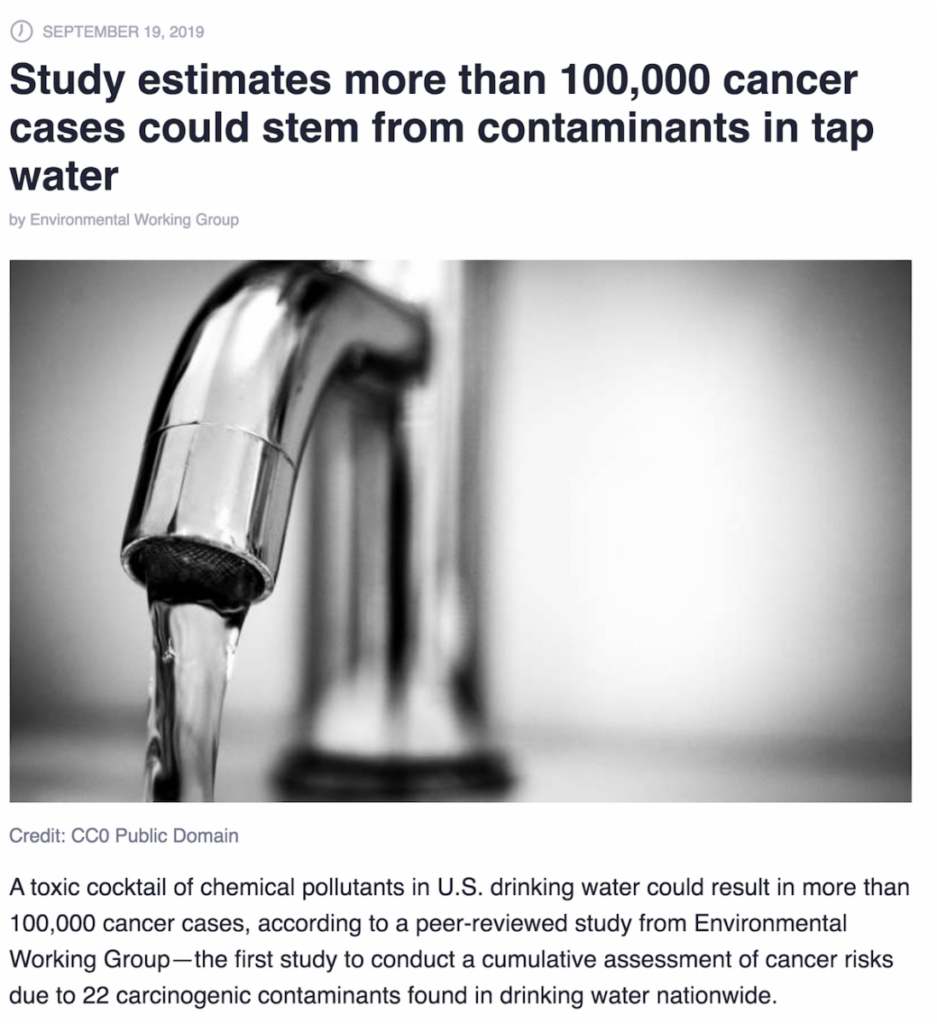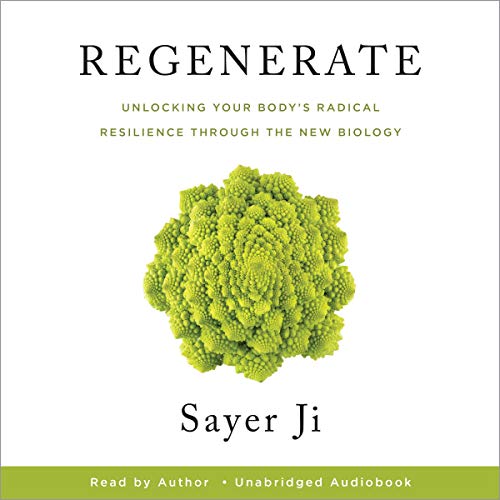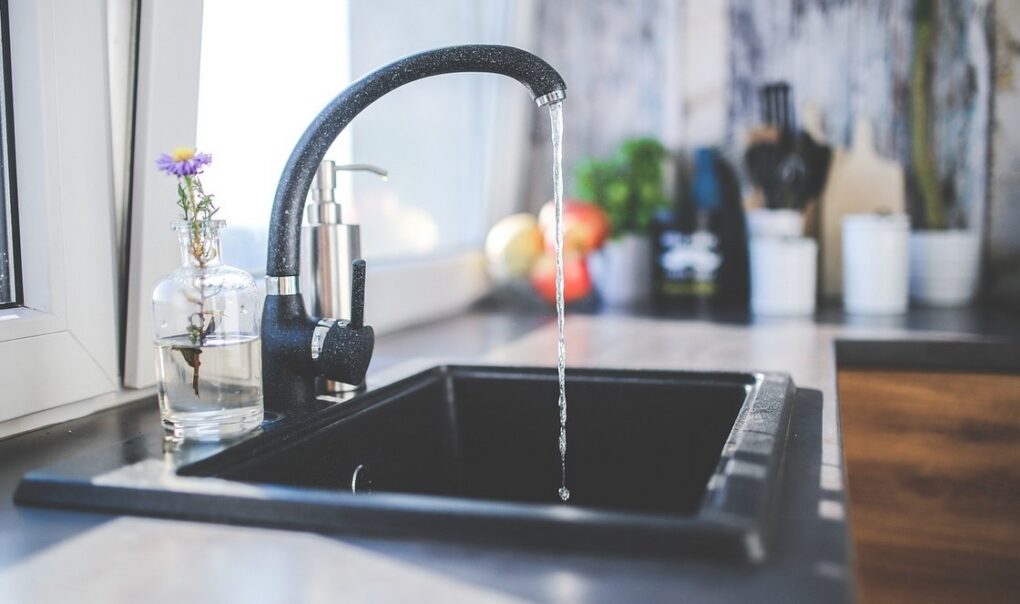Why There is No Such Thing as “Safe” Tap Water
 By Sayer Ji
By Sayer Ji
Despite being at the top of the global food chain and industrial developmental ladder, the United States has a poor track record for delivering uncontaminated drinking water to the public. Even the nicest restaurants are guilty of serving you directly from the tap. It’s time to get real about the “tap water problem,” one of the most significant vectors of toxicity of our age…
Water is life, as the saying goes. And it’s more than just a poetic phrase. Water is so intrinsically connected to life, if you counted all the molecules in the human body, 99% of them would be water!
On average, a human life can be sustained for up to three weeks without food, but a person won’t survive more than a few days without water. Under extreme conditions, an adult can lose around one liter of water per hour, all of which needs to be readily replaced to maintain a healthy fluid balance. So, what could be more important than consuming high quality, non-contaminated water?

In the United States, most of the water we utilize comes from our domestic water tap. We cook with it, we bathe in it; we use it on our yards, and in our pools. And we rarely, if ever, consider how clean or safe it is to do so. But when it comes to drinking water, quality is not something that can be sacrificed in exchange for plentiful supply.
One of the most profound technological developments in the modern era was the implementation of mass public sanitation infrastructures and the subsequent availability of water free from feces and other biological contaminants. Indeed, this, along with improved nutrition and refrigeration technologies, was what was behind the widespread reduction in epidemic outbreaks in ‘infectitious diseases’ in the mid-tweintieth century and not the introduction of mass vaccination campaigns which came afterwards. Drinking unclean water can cause either acute or chronic effects, depending on the nature of the contaminant, and the concentration. Dysentery, a common water-borne bacterial infection, causes acute reactions such as intestinal inflammation, and severe diarrhea. A serious condition, dysentery causes rapid dehydration, and an infection which can be fatal, if left untreated. It is still a common third-world killer today.
Yet, with the introduction of modern water sanitation technologies, another problem emerged: chronic, culminative poisoning to nonlethal doses of contaminants, such as most industrial chemicals. Fertilizer runoff, and other industrial pollutants, contaminate streams and rivers worldwide.
The Illusion of Safety / Not MY Tap!
It’s easy to think that living in the United States gives us a free pass from such concerns. But recent headlines speak to a darker reality.
You’ve heard about the ongoing battle for clean water in Flint, Michigan. But unsafe tap water is not a localized phenomenon. Recent reports have found that 62 million Americans are exposed to unsafe drinking water, and that chemical contaminants in tap water could be the cause of 100,000 cancer cases in the United States. Yet often, these flag-raising issues don’t trigger safety responses until people start getting sick.
Safeguarding the health of our bodies includes ensuring that the water we drink has been properly filtered, or comes from a known-clean source such as a spring or an uncontaminated well. Only trust bottled water that comes from a reputable company.
 SimPure Y7P-BW UV Countertop Reverse Osmosis Water Filtration Purification System, 4 Stage RO Water Filter, Bottleless Water Dispenser, 4: 1 Pure to Drain (No Installation Required)
SimPure Y7P-BW UV Countertop Reverse Osmosis Water Filtration Purification System, 4 Stage RO Water Filter, Bottleless Water Dispenser, 4: 1 Pure to Drain (No Installation Required)
And don’t let being in a nice restaurant in a big city lull you into a sense of complacency. From New York City to Encinitas, Portland to Boulder, veritable meccas of food quality and health consciousness are serving unfiltered tap water. You don’t have to see it to believe it.
Lead and Fluoride: Lethal Offenders
Among the most common water contaminants, none are as dangerous to our health as lead and fluoride. Studies show even low-dose lead exposure can cause brain damage and developmental problems in young people. Lead leaches into water systems through old, corroded pipes like the ones found in many turn-of-the-century cities and towns. This problem will worsen in coming years, as 20th century infrastructure continues to decay, and increased testing efforts raise awareness.
Fluoride is one of the greatest cons ever perpetrated on the American public. While some areas of the country can have high-levels of naturally occurring fluoride, the type that is added to about 90% of municipal water supplies are the silicofluorides, fluorosilicic acid (FSA) and sodium fluosilicate (NaFSA), by-products of the aluminum industry.
Done under the assertion that it helps prevent dental caries in underserved populations, this claim has been widely debunked in recent years. Authors of A Critical Review of the Physiological Effects of Ingested Fluoride, concluded that “Available evidence suggests that fluoride has a potential to cause major adverse human health problems, while having only a modest dental caries prevention effect.” These studies show that dental remineralization occurs when small amounts of fluoride are topically applied to teeth, not when ingested.
Although the medical establishment works hard to hide the dangers of fluoride, science is beginning to sound the alarm. In 2014, fluoride was added to a growing list of developmental neurotoxins, and the evidence of a link between ingested fluoride and the development of cancer is deepening.
What are some of the lesser-known but still frighteningly common contaminants being found in our drinking water? We’ve compiled five of the top reasons to find an alternative to tap water. (And no, single-step carbon filters don’t fix the problem.)
1) Disinfectant By-products
Chemicals like chlorine, bromine, and iodine are in the class known as halogens (“salt-producing”), and are frequently used as industrial disinfectants. Water treatment facilities are dependent on them, especially chlorine, to kill harmful bacteria that is commonly present in public water systems.
Trihalomethanes, a class of chemicals that includes chloroform, are dangerous by-products of these treatment processes. Trihalomethanes have been linked to colon and rectal cancers, as well as birth defects, low birth weight and miscarriage.
Scientists suspect that trihalomethanes in drinking water may also be causing thousands of cases of bladder cancer every year. In a 2007 report, a startling 50% increase in bladder cancer risk was identified in a group of subjects who consumed water with trihalomethane concentrations higher than 21 parts per billion. The current EPA limit for total trihalomethanes in drinking water is 100 micrograms per liter, or 1 part per billion in water.
Shockingly, 600 disinfectant by-products that are known to cause harm to the human body have been identified in municipal tap water. Even more alarming is the fact that potentially harmful interactions between these chemicals are not reflected in any of the toxicology studies of individual chemicals.
 Regenerate: Unlocking Your Body’s Radical Resilience Through the New Biology
Regenerate: Unlocking Your Body’s Radical Resilience Through the New Biology
While the water-treatment industry has sought alternatives to chlorination, initial efforts have not found safe alternatives. Until that time, treatment facilities will continue mixing these dangerous chemicals in the petri dish of our public water supply, until the cost to public health clearly outweighs the short-term benefits
2) Radionuclides
It’s hard to dispute that we live in an age of radioactive fallout. From the nuclear weapons tests of the last century, to the meltdowns at Three Mile Island, Chernobyl, and Fukushima, highly toxic, radioactive elements called radionuclides have found their way into the environment, and inevitably, into our food supply.
Our water is not immune from these contaminants. The disaster at Fukushima prompted the Japanese government to authorize the dumping of 777,000 tons of water tainted with tritium, the radioactive version of hydrogen, into the Pacific Ocean. This nuclear waste makes its way into the broader atmosphere via condensation of contaminated water, and eventually into groundwater supplies.
And it doesn’t take a meltdown to release this dangerous radiation into the environment. High levels of tritium have recently been found in the groundwater around the Miami, Florida nuclear complex at Turkey Point. Believed to be the result of seepage from underground cooling canals, these leaks are even more troubling due to their positioning between two national parks known for flourishing marine habitats, and their value to the public as recreation areas.
3) Pharmaceuticals
Scientists were alerted to something “fishy” going on in the Potomac River in the late 1990’s, when fish were found with both male and female sex organs. It was soon discovered that phytoestrogens in the water, likely from synthetic birth control pills, were affecting the hormones of these aquatic “canaries in the coal mine.”
This signaled a big wake-up call regarding the presence of pharmaceutical drugs in public water supplies.
Drugs are xenobiotics, treated by the body as foreign substances that must be eliminated. This means they don’t biodegrade well, and are often found persisting in the environment as pollutants. Not unlike pesticides, a wide range of pharmaceuticals can be found in minute but still significant quantities in environmental and municipal water samples, making second-hand pharmaceutical exposure a now-pervasive problem.
It is often argued that the concentrations of drugs showing up in municipal water supplies are so low as to render them insignificant. This is a dangerous brush-off, considering that most of these drugs are formulated to be effective at low doses. Furthermore, the long-term effects of these “accidental” exposures have never been tested, especially in combination with other chemicals.
While the EPA doesn’t want to “alarm the public”, a representative admits they “are concerned”, and have allocated funds to research this issue further.
4) Fluorosilicic Acid
Fluorosilicic acid is another dangerous waste product that has found its way into our drinking water. A by-product of the phosphate fertilizer industry, fluorosilicic acid is heavily contaminated with toxins and heavy metals (including arsenic, lead and cadmium), as well as radioactive materials.
And it doesn’t get into our water supply merely by groundwater leaching; it’s actively used in water treatment as an alternative to sodium fluoride in the government’s dangerous fluoridation campaign.
Fluorosilicic acid has been shown to contain the carcinogens arsenic and lead, and its high salt content leaches lead from water pipes. Fluorosilicic acid is so dangerous, the website PolyProcessing.com explains the difficulties of ensuring safe, industrial containment: “FSA interacts negatively with metals to produce a flammable hydrogen gas, meaning a stainless steel chemical storage tank is not a viable option. It attacks glass, eats through concrete, and poses a serious storage concern.…”
Not a pharmaceutical grade substance, even the EPA admits that the use of fluorosilicic acid (in the form hydrofluorosilicic acid) constitutes a practice akin to turning the public water supply systems of the United States into ‘hazardous waste disposal for these products.’
In 2013, concerned researchers petitioned the EPA to mandate a switch from using these industrial chemical waste products to fluoridate drinking water, to pharmaceutical-grade fluoride. Despite an estimated 100-fold decrease in risk of cancers, the EPA rejected the switch as being “too costly.”
5) Chemical pesticides
Groundwater provides the drinking water for more than half of the U.S. population, and is the source for most springs and wells that supply many rural homes. Just like the run-off in the bottom of your potted plant, when our nation’s farms and fields get watered, all the fertilizers, herbicides, and other chemicals used to treat them pass right through the soil, eventually leaching into groundwater supplies.
Knowing which substances are passing into your glass can be helpful for both monitoring and advocating tighter controls on agricultural practices that contribute many of these chemicals to the nation’s water table. These are just a few of the offenders that you don’t want in your glass!
DDT (Dichloro-Diphenyl-Trichloroethane)
You may have heard that DDT, the insecticide made famous for its near-decimation of our nation’s bald eagle population, was banned from use in the 1970’s. So how can it still be a problem?
Thanks to a chemical phenomenon known as biopersistence, this widely-used chemical is still posing a cancer risk to Americans.
Biopersistent chemicals are resistant to break-down through metabolic processes. Once inside the body, these chemicals accumulate, often in fat cells and adipose tissue, where they can wreak long-term havoc on hormones, and overall health.
Another factor in this ongoing contamination is the fact that DDT remains legal for use in many countries. DDT molecules can travel vast distances in the atmosphere, leaving toxic soil in their wake.
DDT is acknowledged to be carcinogenic by the International Agency for Research on Cancer, as well as causing reproductive health issues and liver damage.
HCB (Hexachlorobenzene)
Originally used on cereal crops to prevent the growth of fungi, HCB is another dangerous chemical whose dark effects were brought to light in the 1970’s. Although use has been discontinued in the U.S., use worldwide has not been eliminated. HCB has been detected at measurable levels in air, water, soil, and food samples in the United States in recent years.
A by-product that is produced via numerous chemical processes, HCB ingestion is known to cause liver damage, neurological symptoms, and tainted breast milk. Large doses can be fatal.
To demonstrate HCB’s ability to biopersist, studies found that 30 years after acute exposure, breast milk of affected women still contained up to 150 times the allowable limit for consumption.
Dacthal® (DCPA, dimethyl tetrachloro terephthalate)
Dacthal is a popular herbicide used to control grasses and weeds. Unlike HBA and DDT, Dacthal is still legal for use in the United States, despite its growing fame as a dangerous ground water contaminant.
Dacthal first hit the radar as a chemical troublemaker around 1999, when the EPA launched large-scale monitoring of public water systems. Dacthal degradates were found in concentrations as high as 15% in several states, primarily where agriculture was prominent.
Dacthal bio-persists in adipose (fatty) tissue, and was found in animal studies to negatively impact multiple regions of the body, including liver, kidney, thyroid, and lungs.
A comprehensive groundwater study conducted by the Michigan Department of Community Health to gather toxicological data, determined that the herbicide Dacthal and its metabolites constituted a public health hazard.
For more information on tap water research, consult GreenMedInfo’s Tap Water Research database.
The Environmental Working Group’s Tap Water database allows you to search by state for relevant information about the safety of tap water in your area.
References
- https://www.un.org/apps/news/story.asp?NewsID=34150#.WaSDtj6GOUk
- https://www.usatoday.com/story/news/2017/08/14/63-million-americans-exposed-unsafe-drinking-water/564278001/
- https://www.sciencedaily.com/releases/2007/11/071120111526.htm
- https://www.cdc.gov/niosh/topics/lead/health.html
- https://www.ncbi.nlm.nih.gov/pmc/articles/PMC3956646/
- https://www.ncbi.nlm.nih.gov/pubmed/24719570/
- https://www.thelancet.com/journals/laneur/article/PIIS1474-4422(13)70278-3/abstract
- National Research Council (NRC) Fluoride in Drinking Water: A Scientific Review of EPA’s Standards.Washington, DC, USA: National Academies Press; 2006.
- NHDES. 2006. Trihalomethanes: Health Information Summary. New Hampshire Department of Environmental Services. Available: www.des.nh.gov [accessed January 2013]
- https://www.tandfonline.com/doi/abs/10.1080/15287390701459031
- https://www.atsdr.cdc.gov/toxprofiles/tp6-c1.pdf
- https://www.researchgate.net/publication/5865306_Occurrence_Genotoxicity_and_Carcinogenicity_of_Regulated_and_Emerging_Disinfection_By-Products_in_Drinking_Water_A_Review_and_Roadmap_for_Research
- https://www.japantimes.co.jp/news/2017/07/14/national/science-health/tepco-says-decision-already-made-release-radioactive-low-toxic-tritium-sea-fishermen-irate/#.WaUTuz6GOUk
- https://www.nytimes.com/2016/03/23/us/nuclear-plant-leak-threatens-drinking-water-wells-in-florida.html?mcubz=1
- https://www.webmd.com/a-to-z-guides/features/drugs-in-our-drinking-water
- https://blog.polyprocessing.com/blog/fsa
- https://www.epa.gov/sites/production/files/documents/tsca_21_petition_hfsa_2013-04-22.pdf
- https://www.livescience.com/38952-epa-arsenic-petition-response.html
- (Solley and others, 1993)
- https://en.wikipedia.org/wiki/Persistent,_bioaccumulative_and_toxic_substances
- https://www.cardnochemrisk.com/index.php?option=com_easyblog&view=entry&id=181&Itemid=2
- https://pmep.cce.cornell.edu/profiles/extoxnet/carbaryl-dicrotophos/ddt-ext.html
- https://www.who.int/water_sanitation_health/dwq/chemicals/hexachlorobenzene.pdf
- https://www.nrdc.org/media/2001/010522
- https://www.epa.gov/sites/production/files/2014-09/documents/drinking_water_health_advisory_for_dacthal_and_dacthal_degradates_tpa_and_mtp.pdf
- https://d3n8a8pro7vhmx.cloudfront.net/ncap/pages/26/attachments/original/1428423346/dacthal.pdf?1428423346
- https://www.michigan.gov/documents/DacthalDiAcidHealthConsult_71729_7.pdf
Originally published: 2017-11-13
Article updated: 2019-09-20
Sayer Ji is founder of Greenmedinfo.com, a reviewer at the International Journal of Human Nutrition and Functional Medicine, Co-founder and CEO of Systome Biomed, Vice Chairman of the Board of the National Health Federation, Steering Committee Member of the Global Non-GMO Foundation.
Disclaimer: This article is not intended to provide medical advice, diagnosis or treatment. Views expressed here do not necessarily reflect those of GreenMedInfo or its staff.
Source: GreenMedInfo
This article is copyrighted by GreenMedInfo LLC, 2023
Visit our Re-post guidelines
Top image: Pixabay



